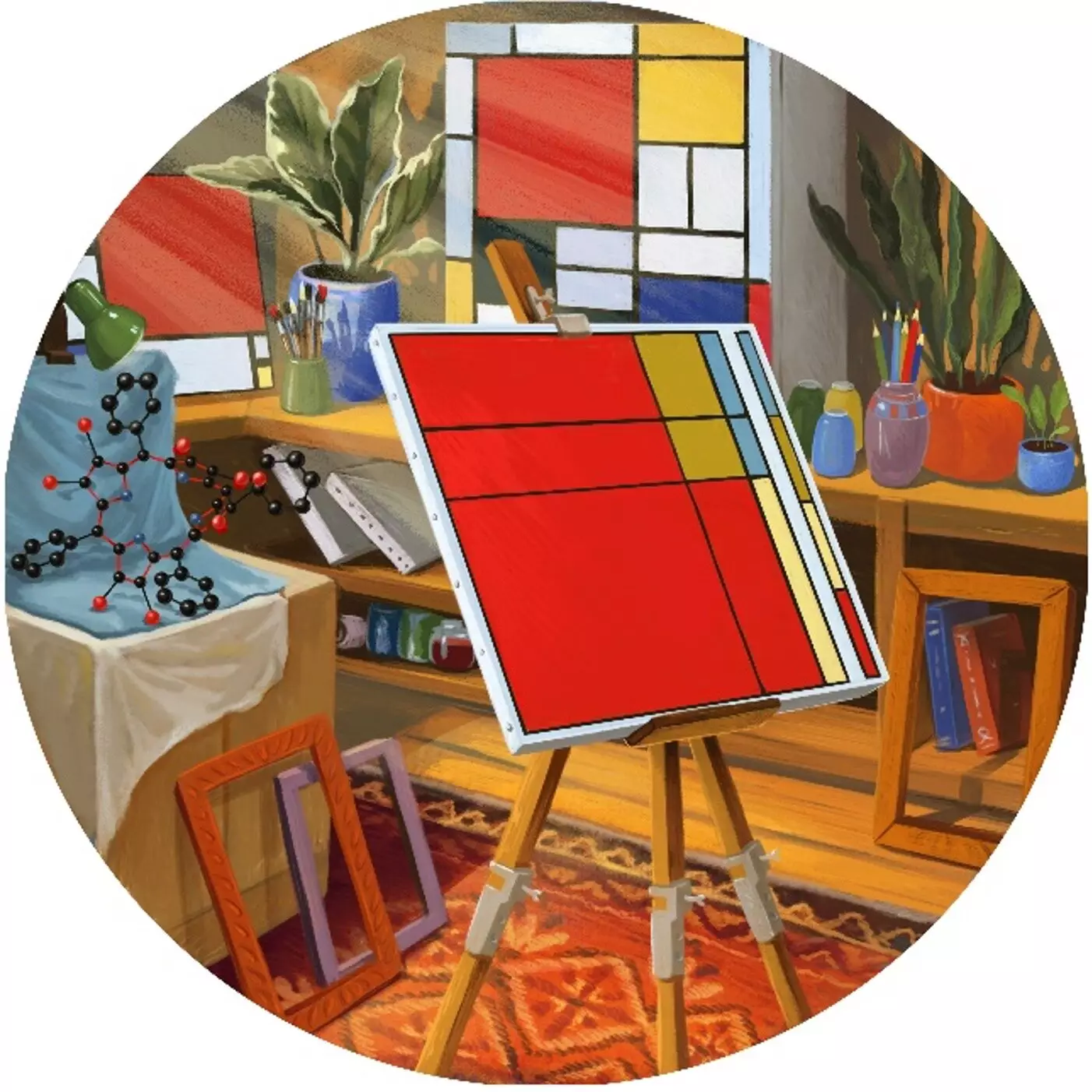In today’s world, the convergence of art and science seldom surfaces, yet when it does, it can inspire profound insights and innovation. A recent initiative by scientists at Trinity College Dublin exemplifies this remarkable synergy. By integrating the artistic essence of Piet Mondrian with molecular chemistry, they’ve crafted a breakthrough program that “paints” molecular structures through an artistic lens. This novel approach not only adds an aesthetic dimension to the field but also holds the potential to enhance our understanding of molecular properties.
The framework of Mondrian’s art is based on primary colors, geometric forms, and a strict layout. This method is aesthetically pleasing and mathematic in nature; it embodies a balance that transcends mere visual beauty. Scientists have long leveraged such artistic principles to explore complex data and relationships, blurring the lines between disciplines while simplifying sophisticated concepts.
The Revolutionary Tool for Chemists and Artists Alike
At the core of this development is a computer program that produces Mondrian-esque representations of molecules. Far from a mere creative endeavor, this program allows researchers to perceive molecular symmetry in a refreshingly unique way. The shapes and colors generated by the algorithm not only provide a visual representation of molecular structures but also convert dense chemical data into forms that are intuitive and accessible.
Mathias O Senge, a leading figure in this research, emphasizes that their project, which started as a playful exploration, highlights the essential characteristics of molecular symmetry. The artistic representation juxtaposes scientific accuracy with aesthetic sensibility, making complex organic structures more digestible for those outside the scientific community. This blending of art and science could redefine how complex chemical concepts are communicated, expanding their reach and impact beyond laboratory walls.
Redefining Scientific Communication
One of the most significant implications of this program is its potential to facilitate universal communication of molecular structures. As Christopher Kingsbury, the project’s first author articulates, presenting molecular diagrams through an artistic form retains their essence while stripping away superfluous details. This abstraction amplifies understanding, enabling scientists to portray the behavior of molecules in various environments. Therefore, the genius of this initiative lies not just in its creative expression but in its pedagogical value—transforming the esoteric language of chemistry into an engaging dialogue that can attract lay audiences and spark curiosity.
Moreover, this practice of simplifying complex phenomena into foundational truths resonates deeply with Mondrian’s approach to art, where simplicity triggers profound insights. Amidst a saturated media landscape, it is critical to explore novel modes of representation that can ignite public interest in scientific discovery and innovation.
Porphyrins: The Vibrant Tapestry of Life
Another dimension of this initiative relates to the previous work done by Senge and his team with porphyrins, a fascinating class of pigments integral to many biological processes. Dubbed the “colors of life,” porphyrins serve as natural indicators of various chemical interactions. By understanding their molecular structure through the artistic representation, scientists might unlock new functionalities or reactions.
The implications are expansive. Envisaging these molecules through an artistic lens might inspire the creation of advanced biological sensors, akin to the tiny Venus flytraps established previously. This artistic approach could foster an environment rich with innovation where not only chemists but also artists collaboratively strive to decode nature’s complexities.
A Clarion Call for Interdisciplinary Collaboration
The melding of science and art should not be seen merely as an unconventional pairing; rather, it embodies a clarion call for interdisciplinary collaboration. Given the rapid pace of scientific advancement, such partnerships will become increasingly necessary to address the multifaceted challenges of our time. This initiative opens the floor for future projects that rethink how scientific principles can be intuitively conveyed through creative means.
Ultimately, this exploration of molecular structures as visual art reflects a broader trend toward democratizing science—making it more approachable and relatable. As we continue to unravel the intricacies of chemical compounds, the ability to visualize this information effectively will be instrumental in fostering public engagement and education. In embracing this novel paradigm, we not only celebrate creativity but also pave the way for a brighter future in the realm of scientific discovery and education.


Leave a Reply